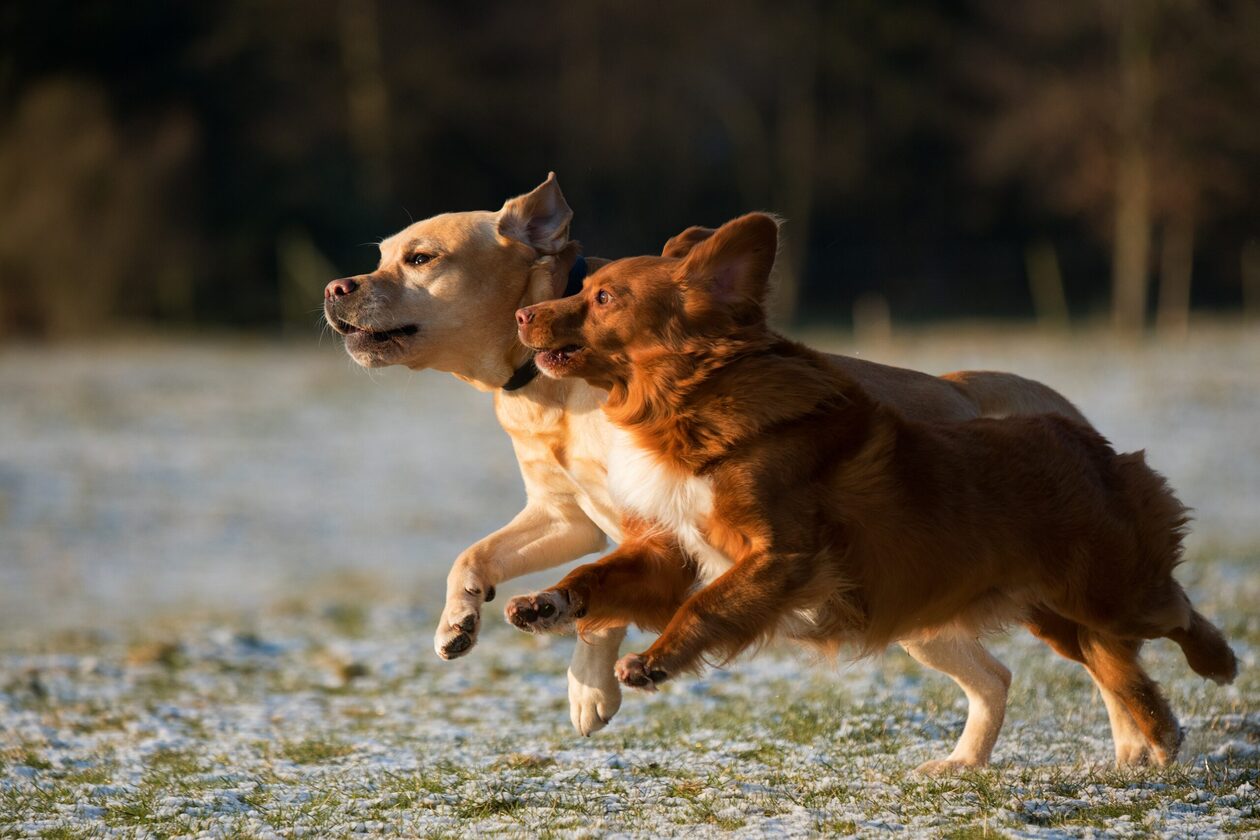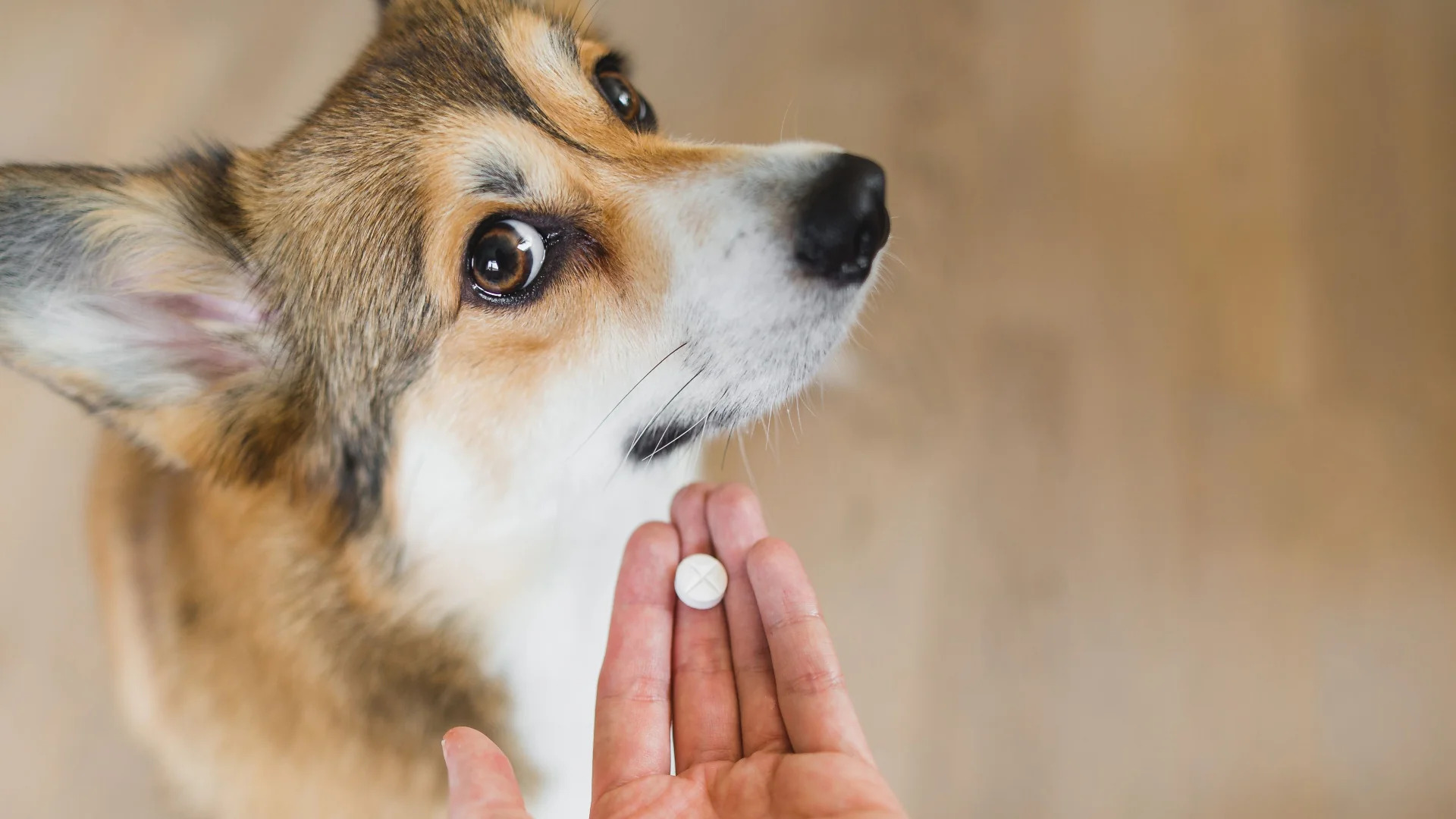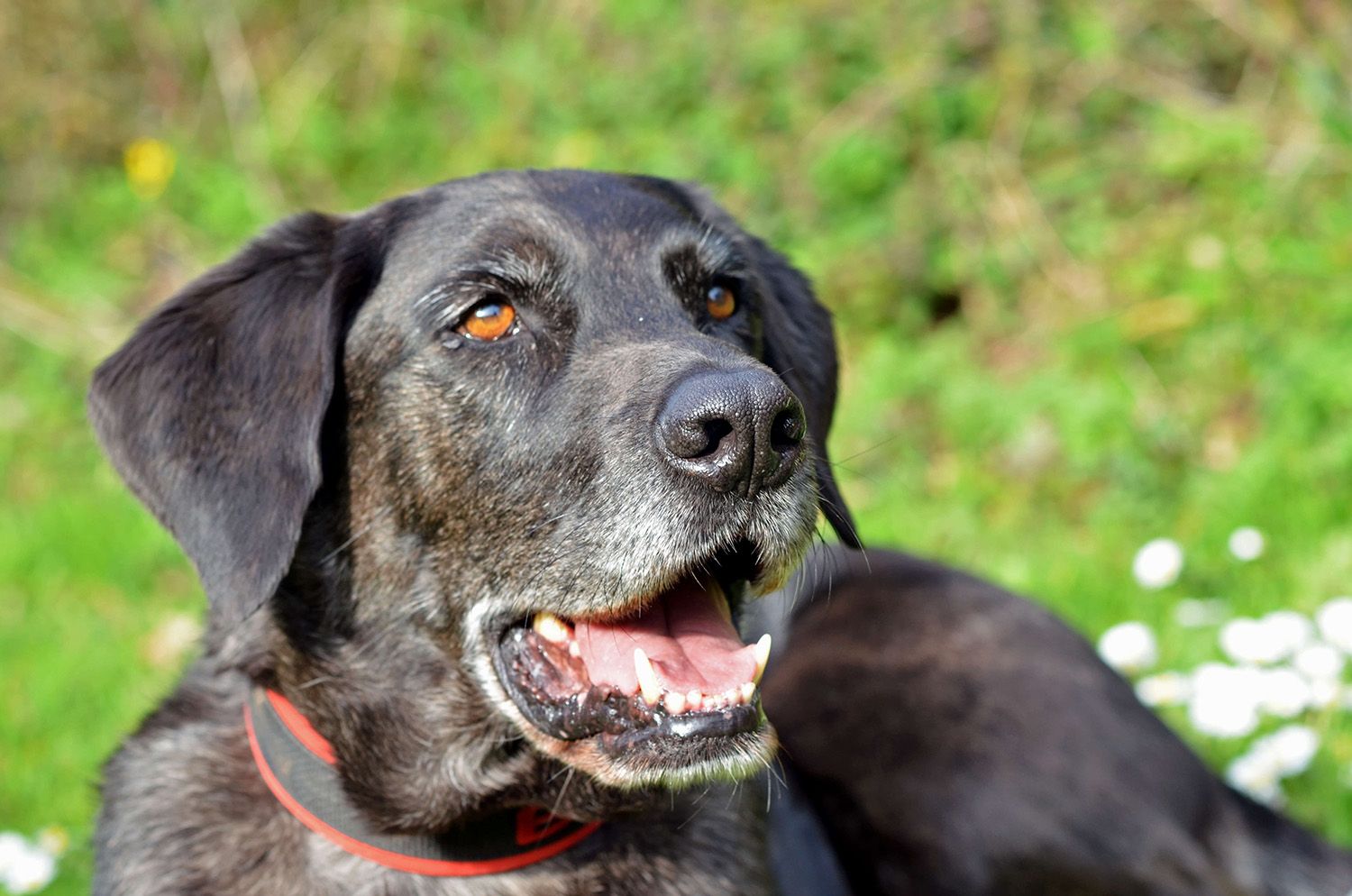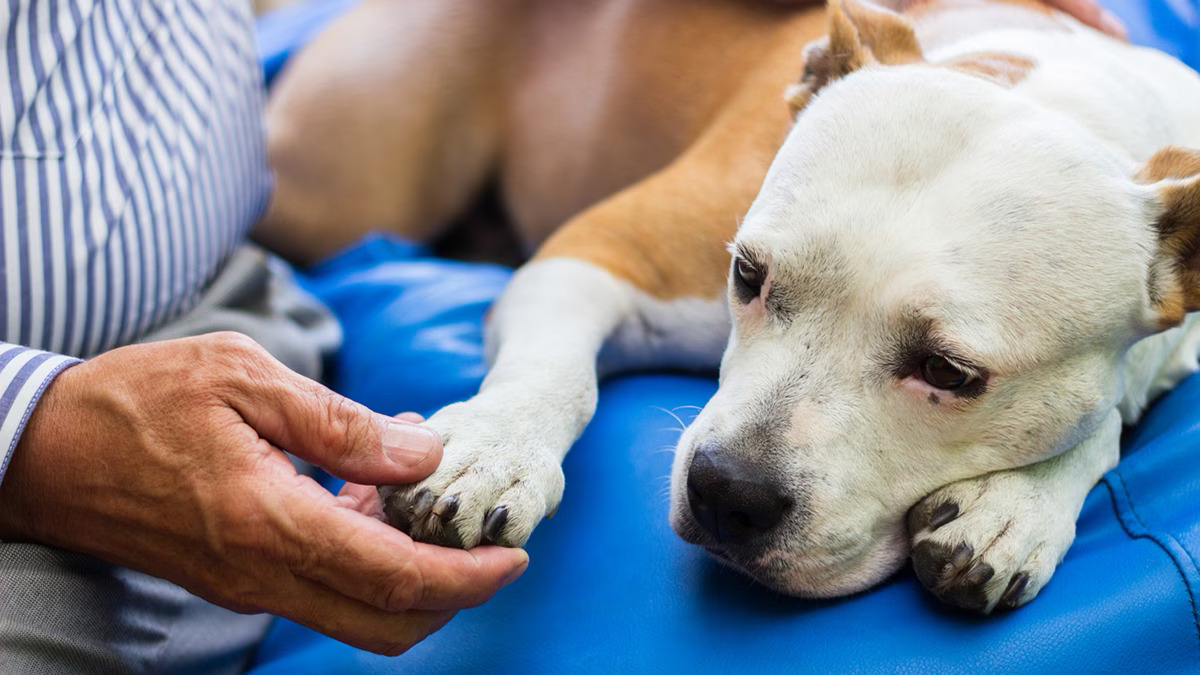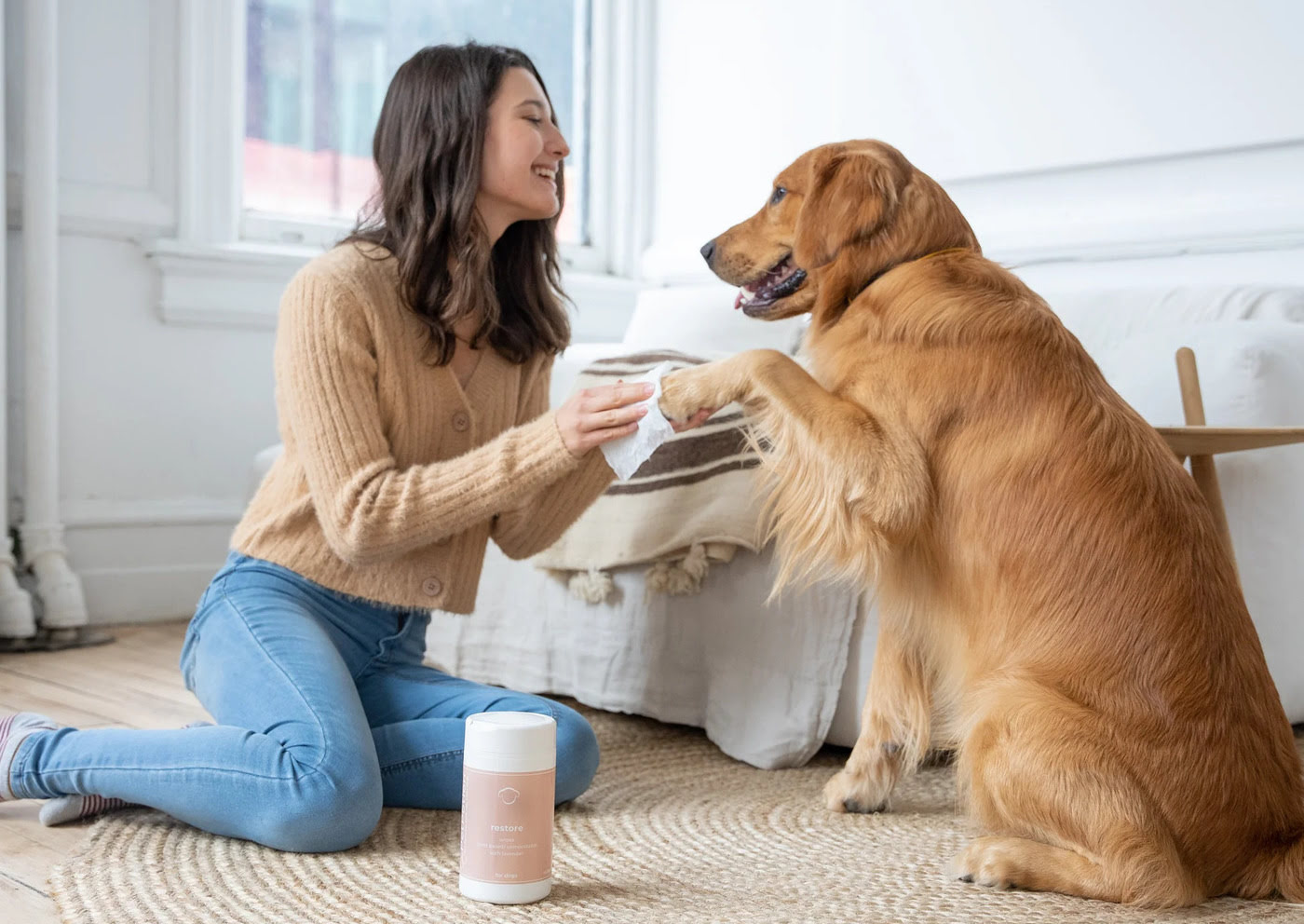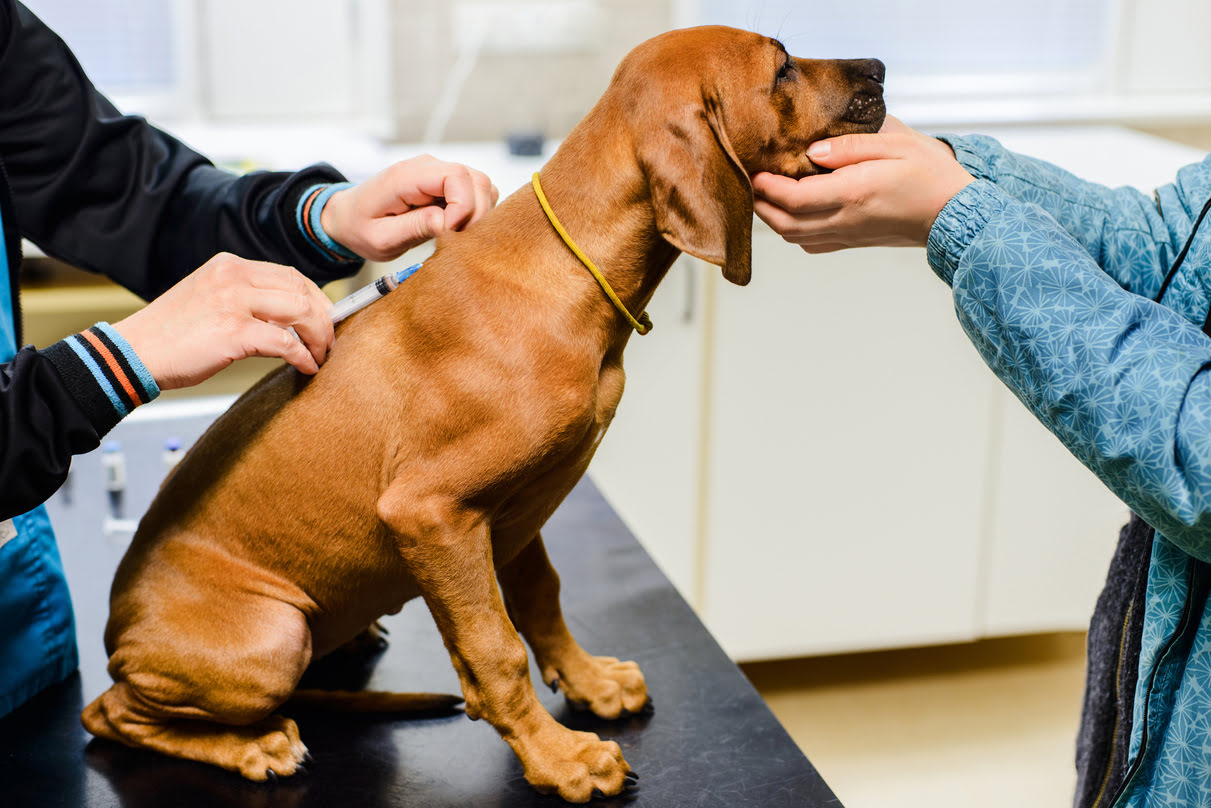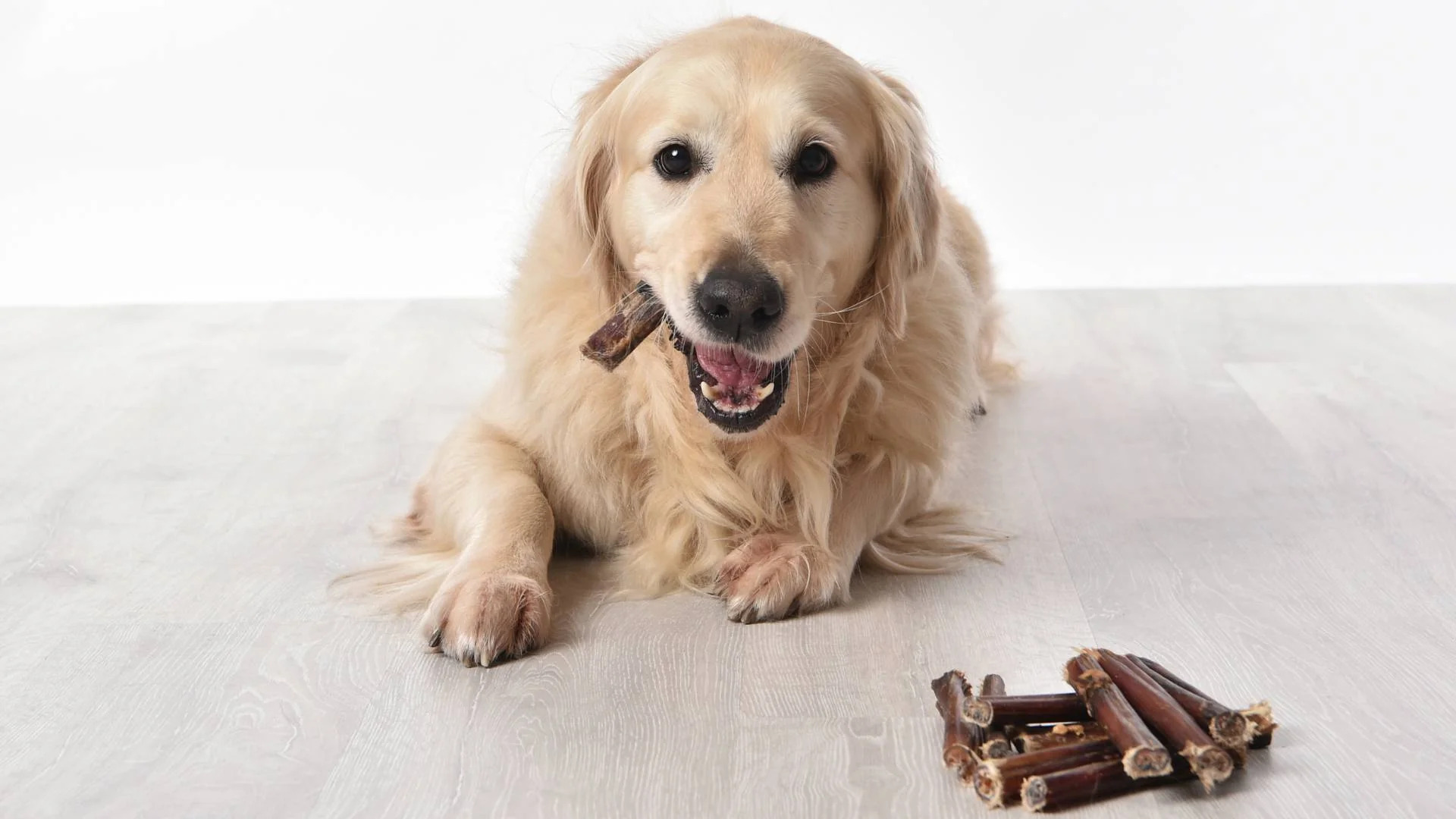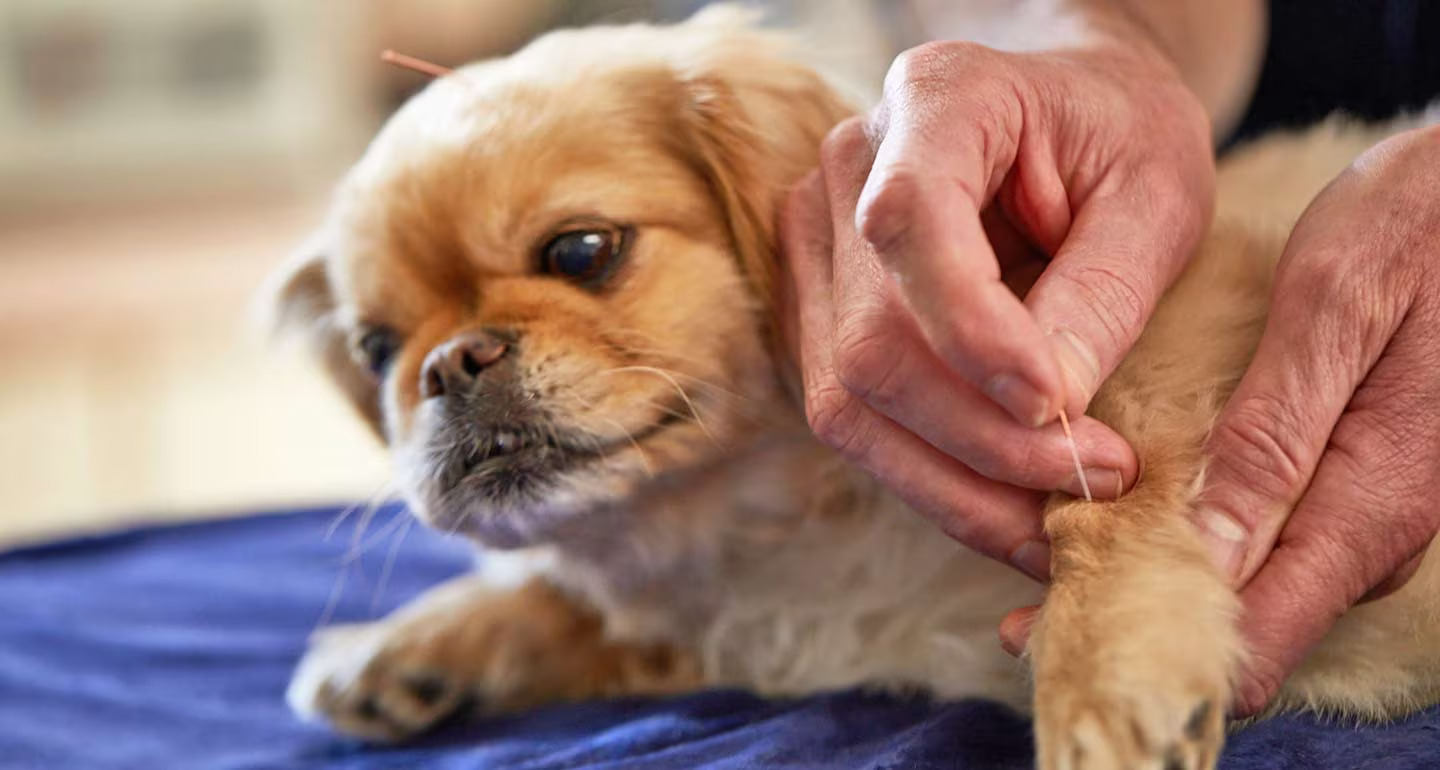Home>Health & Wellness>Common Health Issues>Muscular and Joint Health>How To Give A Dog Massage For Arthritis
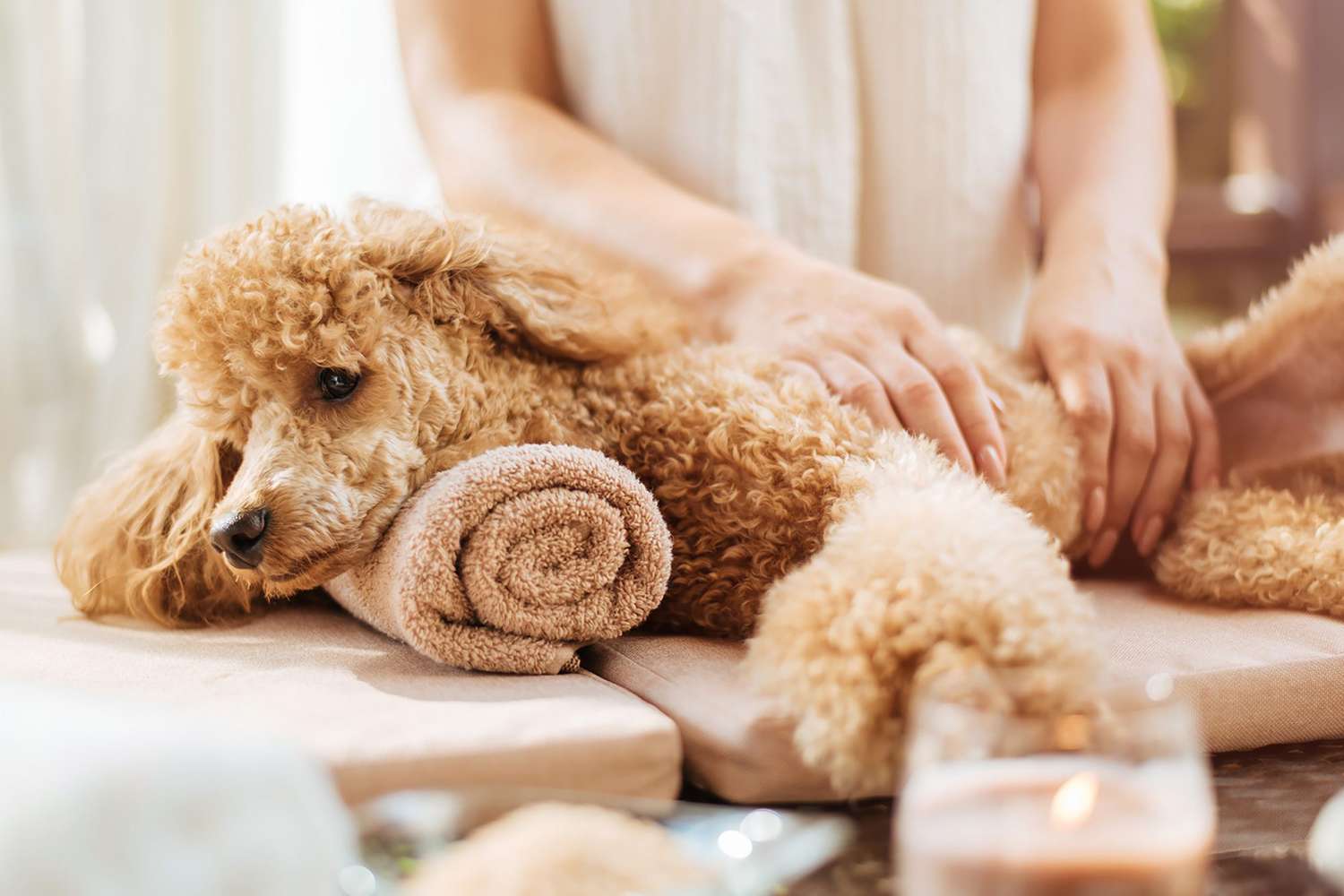

Muscular and Joint Health
How To Give A Dog Massage For Arthritis
Modified: February 21, 2024
Learn how to give your dog a soothing massage to help with arthritis and improve muscular and joint health. Follow our step-by-step guide for a happier, healthier pup.
(Many of the links in this article redirect to a specific reviewed product. Your purchase of these products through affiliate links helps to generate commission for Pawsomeoldies.com, at no extra cost. Learn more)
Table of Contents
Introduction
Arthritis is a common condition that affects dogs of all ages and breeds. It can cause pain, stiffness, and reduced mobility, significantly impacting a dog's quality of life. As a caring pet owner, you may be seeking ways to alleviate your dog's discomfort and improve their overall well-being. One effective and nurturing approach to managing arthritis in dogs is through the practice of canine massage.
Massage therapy has been recognized for its therapeutic benefits in humans for centuries, and its positive effects on dogs are equally remarkable. When tailored to address the specific needs of a dog with arthritis, massage can provide relief from pain, increase flexibility, and promote relaxation. Moreover, the emotional bond between the dog and the owner is strengthened through the gentle and attentive practice of massage.
In this comprehensive guide, we will delve into the art of giving a dog massage for arthritis. You will gain insights into the nature of arthritis in dogs, the benefits of massage therapy, and practical techniques to administer a soothing and effective massage. By understanding and applying these principles, you can play a pivotal role in enhancing your dog's comfort and happiness.
Join us on this journey to discover the transformative power of canine massage for dogs with arthritis. Let's embark on a fulfilling and compassionate endeavor to support our beloved canine companions in their journey towards improved mobility and well-being.
Understanding Arthritis in Dogs
Arthritis, a term derived from the Greek words "arthro," meaning joint, and "itis," meaning inflammation, refers to a group of conditions characterized by inflammation and stiffness within the joints. In dogs, arthritis commonly manifests as osteoarthritis, a degenerative joint disease that affects the cartilage and underlying bone. This condition can be attributed to various factors, including genetics, aging, obesity, joint trauma, or developmental abnormalities.
The onset of arthritis in dogs often leads to discomfort, reduced mobility, and a diminished quality of life. The most prevalent symptoms of arthritis in dogs include stiffness, lameness, reluctance to engage in physical activities, and difficulty rising or climbing stairs. As the condition progresses, dogs may exhibit signs of pain, such as whimpering, licking or biting at the affected joints, and changes in behavior or temperament.
It is essential for dog owners to recognize the signs of arthritis in their canine companions and seek prompt veterinary care. A thorough examination by a veterinarian can facilitate an accurate diagnosis and the formulation of a comprehensive treatment plan tailored to the individual needs of the dog. Diagnostic measures may include physical examinations, X-rays, and joint fluid analysis to assess the extent of joint damage and inflammation.
Understanding the nature of arthritis in dogs empowers pet owners to proactively address the condition and explore holistic approaches to alleviate their dog's discomfort. By gaining insights into the underlying mechanisms of arthritis and its impact on a dog's well-being, pet owners can play a pivotal role in enhancing their dog's quality of life through compassionate and informed care.
Armed with a deeper understanding of arthritis in dogs, we can now explore the remarkable benefits of massage therapy as a supportive and nurturing intervention for dogs with arthritis. Through the application of targeted massage techniques, we can endeavor to alleviate pain, enhance mobility, and foster a profound sense of well-being in our beloved canine companions.
Benefits of Massage for Dogs with Arthritis
Massage therapy offers a myriad of benefits for dogs suffering from arthritis, serving as a gentle and non-invasive approach to alleviate discomfort and enhance their overall well-being. Here are the remarkable advantages of administering a soothing massage to dogs with arthritis:
-
Pain Relief: Massage can effectively reduce pain and discomfort associated with arthritis in dogs. The gentle manipulation of muscles and joints stimulates the release of endorphins, the body's natural painkillers, providing relief from soreness and stiffness.
-
Improved Circulation: By enhancing blood flow to the affected joints, massage promotes the delivery of oxygen and vital nutrients, aiding in the repair and regeneration of damaged tissues. This improved circulation also facilitates the removal of metabolic waste products, contributing to the overall health of the joints.
-
Enhanced Flexibility and Mobility: Through targeted massage techniques, the range of motion in arthritic joints can be improved. This increased flexibility enables dogs to move more comfortably and engage in physical activities with greater ease, thereby enhancing their quality of life.
-
Muscle Relaxation: Arthritic dogs often experience muscle tension and spasms due to compensatory movements and reduced mobility. Massage helps alleviate muscle tension, promoting relaxation and reducing the strain on the affected joints.
-
Emotional Well-being: The nurturing touch and focused attention during a massage session can have a calming and reassuring effect on dogs. This emotional support is particularly beneficial for arthritic dogs, as it helps reduce anxiety and stress, contributing to their overall emotional well-being.
-
Enhanced Bonding: The practice of massaging a dog with arthritis fosters a deeper bond between the pet owner and the dog. It provides an opportunity for meaningful interaction and reinforces the trust and connection between the two, creating a positive and supportive environment for the dog's well-being.
-
Supportive Care: In conjunction with veterinary treatment and medication, massage therapy serves as a complementary approach to managing arthritis in dogs. It can enhance the effectiveness of conventional treatments and contribute to a holistic care regimen for the arthritic dog.
By recognizing and harnessing the multifaceted benefits of massage therapy, pet owners can play an active role in alleviating their dog's discomfort and enhancing their quality of life. The application of gentle and targeted massage techniques can significantly contribute to the well-being of dogs with arthritis, fostering a sense of comfort, mobility, and emotional security.
Through the compassionate practice of massage, pet owners can empower themselves to provide supportive and nurturing care for their beloved canine companions, enriching their lives and fostering a harmonious bond built on care, understanding, and empathy.
Preparing to Give Your Dog a Massage
Before embarking on the journey of giving your dog a soothing and therapeutic massage, it is essential to create a conducive environment and prepare both yourself and your canine companion for the experience. The following steps will guide you in preparing for a successful and enriching massage session for your dog with arthritis:
-
Create a Calm Atmosphere: Choose a quiet and comfortable space for the massage session, free from distractions and loud noises. Creating a serene environment will help your dog relax and fully benefit from the massage experience.
-
Gather the Necessary Supplies: Ensure that you have all the essential supplies within reach, including a soft blanket or mat for your dog to lie on, gentle and pet-safe massage oil or lotion, and a calm demeanor to set the tone for the session.
-
Observe Your Dog's Behavior: Before initiating the massage, observe your dog's body language and behavior. This will provide valuable insights into their comfort level and any areas of sensitivity or discomfort that require special attention during the massage.
-
Consult with Your Veterinarian: If your dog has been diagnosed with arthritis or any other health concerns, it is advisable to consult with your veterinarian before administering a massage. Your veterinarian can offer valuable guidance and ensure that the massage techniques align with your dog's specific needs and medical condition.
-
Establish Trust and Comfort: Spend a few moments engaging in gentle petting and reassuring your dog, fostering a sense of trust and relaxation. This preliminary interaction sets the stage for a positive and nurturing massage experience.
-
Positioning and Support: Position your dog in a comfortable and relaxed posture, ensuring that they feel secure and supported throughout the massage. Use pillows or cushions to provide additional support if needed, especially for dogs with mobility challenges due to arthritis.
-
Mindful Touch and Intention: Approach the massage with a mindful and gentle touch, conveying your intention to provide comfort and relief to your dog. Pay attention to your dog's responses and adjust the pressure and technique accordingly to ensure a soothing and beneficial experience.
By meticulously preparing for the massage session, you can create an environment conducive to relaxation and healing for your dog. This thoughtful approach sets the stage for a meaningful and effective massage experience, allowing you to provide compassionate care and support to your beloved canine companion as they navigate the challenges of arthritis with grace and comfort.
Techniques for Massaging a Dog with Arthritis
When massaging a dog with arthritis, it is crucial to employ gentle and targeted techniques that alleviate discomfort and promote relaxation. The following techniques are tailored to address the specific needs of arthritic dogs, fostering a sense of comfort and well-being:
Read more: What To Give A 50 Lb Dog For Arthritis Pain
Effleurage
Effleurage, or gentle stroking, serves as an ideal starting point for a dog massage. Using long, sweeping strokes with light pressure, begin at the neck and shoulders, gradually moving down the spine and along the limbs. This technique helps relax the dog and prepares their muscles and joints for more focused massage techniques.
Petrissage
Petrissage involves gentle kneading and lifting of the muscles, aiding in the release of tension and promoting circulation. With arthritic dogs, it is essential to apply this technique with a delicate touch, focusing on areas of muscle tightness and stiffness. The gentle manipulation of muscles can alleviate discomfort and enhance flexibility.
Circular Friction
Circular friction entails using circular motions with light pressure over specific areas of the body, such as the hips, shoulders, and limbs affected by arthritis. This technique helps stimulate blood flow to the joints, promoting the delivery of nutrients and oxygen while reducing stiffness and discomfort.
Passive Range of Motion
Passive range of motion exercises involve gently moving the dog's limbs through their natural range of motion, aiding in maintaining flexibility and preventing muscle contractures. For arthritic dogs, these exercises should be performed with utmost care and within the dog's comfort level, helping to enhance joint mobility and reduce stiffness.
Acupressure Points
Applying gentle pressure to specific acupressure points can help alleviate pain and discomfort in arthritic dogs. Targeting acupressure points associated with joint health and relaxation, such as the hock and elbow points, can provide relief and promote a sense of well-being for the dog.
By incorporating these targeted massage techniques into the care regimen for arthritic dogs, pet owners can play a pivotal role in enhancing their dog's comfort and mobility. It is essential to approach each technique with sensitivity and attentiveness, adjusting the pressure and duration based on the dog's response and comfort level. Through the application of these nurturing techniques, pet owners can provide invaluable support to their beloved canine companions, fostering a sense of relief and well-being amidst the challenges of arthritis.
Tips for a Successful Dog Massage
-
Observe Your Dog's Comfort: Pay close attention to your dog's body language and responses during the massage. Look for signs of relaxation or discomfort, and adjust your techniques accordingly to ensure a positive experience for your dog.
-
Start Gradually: Begin the massage with gentle and light pressure, gradually increasing as your dog becomes more relaxed. This gradual approach allows your dog to acclimate to the touch and fosters a sense of trust and comfort.
-
Focus on Affected Areas: Concentrate on massaging the areas most affected by arthritis, such as the hips, shoulders, and limbs. Apply targeted techniques to these areas to alleviate stiffness and promote mobility.
-
Use Gentle and Consistent Movements: Employ smooth and consistent movements during the massage, avoiding abrupt or erratic motions. This gentle approach helps your dog relax and benefits from the therapeutic effects of the massage.
-
Maintain a Calm Demeanor: Your demeanor and energy during the massage significantly impact your dog's experience. Maintain a calm and soothing presence, conveying reassurance and care to your dog throughout the session.
-
Respect Your Dog's Limits: Be mindful of your dog's comfort and any signs of sensitivity. If your dog shows signs of discomfort or agitation, adjust the pressure or technique, or conclude the massage if necessary.
-
Offer Verbal Reassurance: Use a soothing and reassuring tone while speaking to your dog during the massage. Your gentle voice can further enhance the calming effect of the massage and strengthen the bond between you and your dog.
-
Monitor Your Dog's Response: Continuously monitor your dog's response to the massage, observing for signs of relaxation, increased mobility, or reduced tension. This feedback guides your approach and ensures a beneficial experience for your dog.
-
Allow Rest and Recovery: After the massage, provide your dog with a quiet and comfortable space to rest. This allows them to fully benefit from the effects of the massage and promotes relaxation and well-being.
-
Consistency is Key: Incorporate regular massage sessions into your dog's care routine, maintaining a consistent schedule to provide ongoing relief and support for their arthritis. Consistency in massage therapy can yield lasting benefits for your dog's comfort and mobility.
By adhering to these tips, pet owners can create a nurturing and effective massage experience for their arthritic dogs, fostering a sense of comfort, relief, and well-being. The attentive application of these tips enables pet owners to play a pivotal role in supporting their beloved canine companions on their journey towards improved mobility and quality of life.
Conclusion
In conclusion, the practice of administering a soothing and therapeutic massage to dogs with arthritis holds profound significance in enhancing their comfort, mobility, and overall well-being. Through a compassionate and informed approach, pet owners can play a pivotal role in alleviating the discomfort associated with arthritis and fostering a sense of relief and relaxation for their beloved canine companions.
By gaining a deeper understanding of the nature of arthritis in dogs and the remarkable benefits of massage therapy, pet owners are empowered to provide holistic and supportive care for their arthritic dogs. The multifaceted advantages of massage, including pain relief, improved circulation, enhanced flexibility, and emotional well-being, underscore its transformative impact on the lives of dogs grappling with arthritis.
The journey of giving a dog massage for arthritis begins with a thoughtful and meticulous preparation, creating a serene and conducive environment for the massage experience. By observing the dog's behavior, consulting with a veterinarian, and establishing trust and comfort, pet owners set the stage for a meaningful and effective massage session that prioritizes the well-being of their canine companions.
The application of gentle and targeted massage techniques, such as effleurage, petrissage, circular friction, passive range of motion, and acupressure points, enables pet owners to address the specific needs of arthritic dogs with sensitivity and attentiveness. These techniques, when applied with care and intention, contribute to the alleviation of discomfort, the promotion of relaxation, and the enhancement of mobility for dogs with arthritis.
Furthermore, adhering to essential tips for a successful dog massage, including observing the dog's comfort, starting gradually, and maintaining a calm demeanor, ensures that the massage experience is nurturing, beneficial, and tailored to the individual needs of the arthritic dog.
In essence, the practice of giving a dog massage for arthritis transcends the physical realm, fostering a deeper bond between pet owners and their dogs while providing invaluable support and relief. Through the consistent incorporation of massage therapy into the care regimen, pet owners can embark on a journey of compassion and empathy, enriching the lives of their arthritic dogs and nurturing a harmonious and supportive environment.
Ultimately, the art of canine massage for dogs with arthritis embodies the essence of compassionate care, empathy, and the unwavering commitment to enhancing the well-being of our cherished canine companions. It is a testament to the enduring bond between humans and dogs, rooted in care, understanding, and the shared journey towards comfort, mobility, and a life filled with joy and vitality.

